Navigating the intricacies of a SaaS (Software as a Service) business can be overwhelming. Delving into SEO (Search Engine Optimisation) can intensify these challenges, especially with the surge of self-proclaimed SEO experts making lofty promises without substantial results.
The real challenge is identifying the optimal strategy for organic growth within your SaaS venture. Grasping the nuances of effective SEO implementation is pivotal. Moreover, SEO strategies tailored for SaaS businesses differ from those designed for other industries.
Unravel the tapestry of nuanced tactics, and unearth the prodigious potential that lies beneath effective search engine optimization. In a world where being seen equates to success, mastering SEO for SaaS isn’t just an option; it’s the quintessential lifeline for growth and sustained market relevance. Engage with this guide, unearth the wisdom it holds, and be the beacon that lights up the SaaS landscape this year.
Overview of the SaaS SEO Framework
Our SaaS SEO approach is segmented into distinct components that synergistically drive tangible results for SaaS companies.
The intent of this post is to empower your team with the knowledge to implement SEO best practices efficiently, optimise resource allocation, and bolster the growth trajectory of your SaaS venture. If you stumble upon challenges or tasks that seem insurmountable, contact PageTraffic for assistance about SEO-related inquiries.
To fully grasp the potency of SEO for SaaS companies, it’s essential to comprehend:
- The distinctiveness of the SaaS business model.
- Our reliable SEO framework.
The SaaS Business Model
The SaaS business model essentially revolves around charging clients for accessing a bespoke software product or suite of tools.
Distinct from traditional business models, SaaS enterprises focus on intangible products with versatile features. These offerings can be tweaked, enhanced, and customised to cater to diverse contexts and sectors.
Additionally, SaaS entities can incorporate novel functionalities to tap into emerging markets and carve unique niches. Leveraging Search Engine Optimisation (SEO) can bolster the competitive edge of SaaS firms in organic search landscapes, proving to be a formidable strategy for sustainable growth.
The Proven SaaS SEO Framework
While SEO might seem intricate, our ethos emphasises clarity. Over a decade, we’ve honed an approach that consistently facilitates the growth of SaaS companies through targeted SEO endeavours. We prioritise transparency, ensuring our clientele understands the intricacies of SEO and its potential to deliver impactful outcomes.
SaaS SEO Ranking Factors
The SaaS business model might seem straightforward, but truly understanding SEO involves delving deep into its multifaceted landscape. The ranking of a webpage on Google hinges on numerous determinants. With the integration of an AI-powered search engine, these determinants continually evolve.
SEO services demystify the intricate web of ranking factors for SaaS companies, empowering them with insights to ascend search engine results with precision.
Familiarity with these intricacies is crucial to achieving optimal outcomes. Below, ranked by importance, are pivotal elements that significantly influence your site’s ranking on Google:
- User Engagement Metrics
This encompasses the interactions visitors have with your site. These exchanges are gauged through several metrics such as dwell time (the duration a visitor spends on your site), clicks, interactions with the content, page views, the specific page from which visitors exit, and instances when they abruptly leave or backtrack. Google highly values user interactions and the content’s relevance to the searcher.
The quality of user experience significantly influences engagement. Hence, ensuring that your content is expertly crafted and easily discoverable via Google search is pivotal. Since 2017, this factor has played a key role in determining site rankings on the search engine and has indirectly enhanced Google’s ad revenue.
- Link Metrics
SEO professionals leverage link metrics to bolster rankings continually. These metrics encompass:
- Procuring backlinks from external sites.
- Integrating internal links within your website.
- Evaluating the relevance and choice of anchor text pointing to your website.
- Assessing the domain authority of the linking page and site.
- Understanding your site’s domain authority across different sections.
Additionally, discerning the distinction between no-follow and do-follow links, their relation to your site, and their placement on the source page is crucial. Though myriad metrics influence a successful link-building strategy, the ones mentioned above are paramount.
Also Read: Affordable SEO Services for Small Businesses- 2024 Guide
- Onsite Content
The umbrella term “Onsite Content” envelops various ranking determinants that can be distilled into primary components. These entail:
- Incorporating the target keyword within the title tag.
- Optimising the page for target keywords.
- Strategically dispersing keywords throughout the content, with emphasis on headers and introductory paragraphs.
- Aligning content with pertinent terms.
- Content length considerations.
- Interlinking the page with other related pages on the site.
- Integrating essential keywords and ensuring comprehensive topic coverage.
- Incorporating dynamic content elements like tiles or cards that link to other sections or websites.
Beyond the aforementioned aspects, other onsite content factors can influence the ranking potential of a page. Content quality is paramount for users, offering them valuable insights about your brand or industry. This heightens the likelihood of return visits and content sharing, both favourable signals for Google, enhancing traffic from diverse channels.
- Technical Structure and Usability
Multiple facets dictate user interaction, impacting how search engines navigate your site. The efficiency of Google’s site crawling and indexing correlates with its ease of execution. Streamlining the process leads to accelerated rankings.
Your website’s technical framework encompasses elements such as page load speed, which plays into user engagement. Google’s assessment also includes your site’s linking structure and the occurrence of HTTP status errors like 404s, 500s, and 30Xs.
Google’s site scans discern these factors, along with configurations in robots.txt or sitemap.xml files and settings in CSS and JS files. Also crucial is the speed at which your Content Delivery Networks (CDNs) present content. While this realm may sound technically dense, collectively, these facets mould user engagement, search engine rankings, and the holistic website traffic flow. Primarily, they lay the groundwork for a robust website infrastructure.
Also Read: EAT Signals to Grow Your Website (Infographic)
SaaS Keyword Research
For SaaS companies to align with what customers are searching for, it’s imperative to conduct thorough keyword research. This involves identifying the exact terms potential customers use on search engines like Google. Grasping the intent behind users’ searches is pivotal in optimising your content. Searcher intent helps in predicting the type of results users expect from their queries.
Given the myriad ways users phrase their searches on Google, our approach to keyword research is holistic. We focus on the overall potential of specific terms. To glean insights into what Google deems relevant for a selected keyword, we conduct the searches ourselves and meticulously analyse the top results. Once a preliminary list of potential keywords is established, we delve deeper into keyword volume and the difficulty in crafting a targeted list. This foundational list then guides the SEO strategy.
SaaS Technical SEO
The backbone of SEO is not just about keywords but also the technical underpinnings. The technical SEO can shape the architecture of your site, and any lapses in this foundation might jeopardise future content and links. We begin by undertaking a comprehensive technical audit, identifying any issues that might obstruct users or Google from accessing your site’s information. Based on the results, we prioritise fixes, balancing factors like cost-effectiveness and potential impact.
Continual surveillance of your site’s technical foundation is crucial due to risks associated with page migrations or disruptions. Swift identification ensures timely resolution.
SaaS Content Strategy
Having addressed the technical aspects of SEO, we now turn our attention to the more creative dimension: content. A robust content strategy aims to guide prospective customers in their buying decisions. It factors in their search intent, the keywords they use, and the content currently available.
To formulate an effective content strategy, we assess where to incorporate target keywords and whether new pages are needed. An overarching goal is to streamline content, fostering a logical hierarchy that boosts user engagement.
Our content production approach is meticulous, factoring in ongoing content needs for a site. Drawing on pertinent data and industry trends, we strategise on content creation and integration.
SaaS Link Building Strategy
An offsite strategy zeroes in on link-building, pinpointing the kinds of links vital for your site’s SEO health. Given the somewhat tarnished reputation of link building due to past malpractices, our focus is on fostering a genuine, authoritative link profile. We believe in a genuine PR-based approach for link-building, liaising with writers from various publications and suggesting content ideas, often enriched with exclusive insights.
Building a robust link profile is labour-intensive but invaluable. Links serve as lasting assets, continually enhancing your site’s performance. As these links mature, they’re deemed by Google as markers of a longstanding relationship with the linked site, collectively bolstering keyword rankings.
In subsequent sections, we’ll delve deeper into our link-building strategy for SaaS companies. Though demanding, this facet of SEO is indispensable. A synergised approach, integrating effective link-building with top-tier content creation, will yield the desired outcomes.
Concluding the Framework
Understanding the intricate weave of SEO elements and how they collectively impact your website’s Google ranking is pivotal. As we delve deeper into this guide, we will expand on each facet of this framework. By detailing how the framework aligns with diverse SEO strategies for SaaS companies, our aim is to bolster your enterprise’s online presence.
It’s imperative to underline that these strategies are tailored specifically for SaaS providers, rather than other business domains such as e-commerce or publishing. Later on, we’ll delve into metrics, tracing SEO outcomes, and setting realistic timeframes for anticipated SEO results.
With this foundational structure clarified, let’s delve into strategic keyword research for SaaS ventures.
Strategic Keyword Research for SaaS Enterprises
At the heart of SEO lies understanding your clientele, their search patterns, and the reasons driving their searches. A multitude of tools facilitates precise keyword research, and here, we focus on aligning this with the SaaS model, targeting high-performing, action-inducing terms.
Collect and Generate Keyword Concepts
When commencing the keyword research process, gather accessible information about your target demographic and kick off a brainstorming session. Collaborating with your team is crucial at this stage, given that different audience segments might employ varied search methodologies. Harnessing diverse perspectives can be invaluable. Dedicate an initial couple of hours to this foundational step.
For a structured onset to keyword research, consider using a Google Sheets template. Depending on your preference, you can either utilise a pre-existing template or craft a bespoke one.
Begin by conceptualising and establishing various categories to collate the slew of keywords you unearth. Remember, these categories are malleable and can be refined later. Below are some illustrative categories tailored for SaaS businesses:
- General Product Type: Incorporate overarching terms like “platform,” “software,” “tool,” “system,” or “solution.”
- Solutions: If your product offers a myriad of solutions, pinpoint keywords that resonate with those solutions, such as “traffic enhancement,” “risk mitigation,” “website security,” or “accounting automation.”
- Features: Articulate your product’s features through keywords. Examples include “data export,” “API integration,” “security gateway,” or “accounting data import.”
- Industries and Clientele: If your product has a diverse client base spanning various sectors, encapsulate them in keywords. This aids in future content targeting. Some examples might be “retail,” “aviation,” “transportation,” “hospitality,” or “manufacturing.”
- Integrations: As many SaaS products dovetail with other platforms, integrate keywords that reflect these collaborations. Consider names like “SquareSpace,” “Facebook,” “Salesforce,” or “Stripe.”
- Alternative Competitors: If a competitor, like Salesforce for a budding CRM tool, already dominates your market, harness keywords reflecting this relationship. Phrases like “alternative to Salesforce” or “competitors of Salesforce” can be insightful.
In your Keyword Research Template, dedicate an “Ideas” tab for the preliminary brainstorm. Construct columns for each category mentioned above, and then sort all keyword suggestions under the fitting columns. Remix these keywords, even spawning new categories, ensuring a neat organisation.
Amass keywords from diverse channels, be it Google Search Console, prior paid campaigns, self-conjured keywords, or keyword tools, and curate them into a primary list for subsequent sorting. Juggle the sequence of the keywords, recognising that their permutation can alter the search intent contextually.
For instance, “SaaS keyword research” might hint at a tool specific to SaaS, while “keyword research for SaaS” suggests a guide on conducting keyword research tailored for SaaS entities.
While experimenting, venture into both singular and plural versions of your terms. They might hold differing search volumes or nuances. However, sidestep misspelt variants, as modern search engines are proficient at discerning the intended spelling and surfacing relevant results.
Conducting Manual Search Intent Research
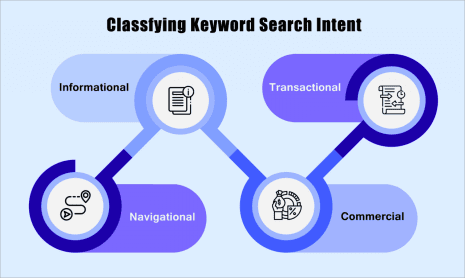
Begin by curating an exhaustive list of terms. To search these terms, employ Google in incognito or private mode to ensure unbiased results. Scrutinise the top 2-3 search outcomes for each term to gain insight into Google’s perception of user intent. Should you stumble upon new keyword ideas during this process, append them to your primary list.
This approach sheds light on the prevailing content that ranks for these terms, spanning blog articles, detailed product pages, and competitors’ sites. Contemplate integrating an additional column in your “Ideas” section to capture the prevalent types of search results swiftly. Such an organisation aids in content planning and structuring.
To further segment your keywords, allocate a distinct column to annotate the presumed search intent behind each term. Here’s a breakdown of potential search intents:
- Awareness: This pertains to searchers who have a cursory familiarity with a term and seek further enlightenment or clarification. Prioritise providing succinct, rich definitions for such terms.
- Research: When users recognise a term but yearn for a deeper dive, they’re in research mode. These searchers pursue foundational knowledge, practical applications of the term, or a deeper comprehension of its relevance.
- Transactional: These keywords tap into the user’s intent to purchase or access a product or service. With transactional keywords, there’s a pivot towards more specific, longer-tail terms or broader generic terms. Such keywords signal that the searcher has transitioned from mere awareness and exploration to serious contemplation of action. In this phase, informative blog posts remain pivotal to guide users in comprehending products.
General and Long-Tail Keywords
Having discussed both general and long-tail keywords, it’s time to precisely define each and chart out a foundational strategy for their utilisation.
- Generic Keywords: Typically, these keywords encompass one or a few overarching terms. Some instances are “billing software,” “sales automation,” or “CRM software.”
- Long-Tail Keywords: Contrarily, long-tail keywords are extended phrases that hone in on specific user search intent. Examples include “intuitive invoicing software for Stripe,” “legal sales automation tools,” or “enterprise CRM software solutions.”
Long-Tail vs. Generic Keyword Strategies
Kick off your project by prioritising the ranking of long-tail keywords. These keywords are more conversion-centric, warranting a larger chunk of your SEO resources. In contrast, achieving visibility for broader, generic terms demands a heftier investment of time and effort. Focusing on long-tail keywords also enables you to amass a rich content reservoir centred on a broader subject.
Take, for instance, a scenario where our objective is to disseminate general information about invoicing software. But the cutthroat competition stalls our initial attempts, leaving us with little to no progress. A more pragmatic approach would be to craft content tailored around niche, longer-tailed keywords linked to invoicing software, like “invoicing software compatible with Stripe,” “invoicing software tailored for small businesses,” or “dedicated invoicing software for contractors.”
Such specialised articles can be neatly bucketed under the umbrella term “Invoicing Software.” This category page could then spotlight a succinct overview of your solution’s unique selling points, enticing readers to delve into the individual articles.
Gradually, as content aggregates under this overarching theme, your website’s authority on the topic of invoicing software solidifies. With a solid foundation in place, diversifying strategies in the future can boost our prospects of securing top ranks for the generic term.
Research Keyword Data
At this juncture, armed with an extensive list of keywords, a grasp of their relevance to your offering, and a structured categorisation method (as elaborated in the “Collect and Generate Keyword Concepts” section), it’s time to dig deeper into keyword metrics. Here are the primary data sources we deem essential, coupled with our methodology for their extraction:
- Search Volume
One crucial metric when gauging a keyword’s potential is its search volume. This measure, often termed Monthly Search Volume (MSV), gauges the regularity with which users search for a particular keyword within a defined period, typically a month. Tools like Ahrefs’ Keyword Explorer and Google Keyword Planner compute the MSV by averaging the searches over the past six months.
This average provides a reliable snapshot of the user interest in a given term. Contrasting the search volumes of various keywords can expedite and refine your decision-making process.
- Difficulty
Tools such as Ahrefs and WordStream offer a measure known as “difficulty.” This metric, scaled between 0 and 100, gauges the challenges associated with achieving a high ranking for a particular keyword, factoring in pivotal Google ranking elements. A score of 100 epitomises the highest degree of difficulty.
- Ranking
Determining your current standing for a given keyword provides insights into Google’s perception of your website’s relevance to that topic. A high ranking for challenging keywords signifies your website’s competitiveness. In such instances, it’s feasible to aim for tougher keywords, anticipating meaningful advancements. Furthermore, this ranking acts as a reference point, enabling you to gauge the impact of your strategic shifts on your position.
- Ranking URL
The ranking URL pinpoints the specific page that Google deems most pertinent for a search query. Occasionally, the URL displayed might not lead to the anticipated content. Such anomalies could necessitate swift adjustments. Conversely, the ranking URL could highlight pages ripe for optimisation around pertinent keywords. These instances present valuable opportunities for immediate enhancement.
- Rich Snippet Results
Certain keywords yield “rich snippets.” These are concise, informative snippets displayed directly within search results, obviating the need for users to click further. Often, they furnish swift responses to user queries. Achieving a ranking in rich snippets underscores your domain’s authority since Google showcases content from your site for this feature.
However, rich snippets might curtail site visits, as users could acquire the needed info without navigating to your site. That said, some individuals might choose to delve deeper, seeking comprehensive insights.
Each of these facets offers invaluable perspectives, underpinning informed decision-making as you hone your SEO strategy.
Tools for Conducting SaaS SEO Keyword Research
Within the expansive array of keyword research tools, we gravitate towards a select few, each with its own set of merits and shortcomings.
- Ahrefs: The platform’s primary utilities are its Keyword Explorer and Rank Tracker. The Rank Tracker is our preferred choice for the bulk (90%) of our keyword research endeavours. It consolidates all aforementioned metrics into a streamlined spreadsheet, with the Keyword Explorer further aiding extended research.
- Advantages: Ahrefs boasts rapid processing, comprehensive analysis, an intuitive interface, and a high degree of data precision, rivalled only by Google.
- Disadvantages: A minor shortfall in accuracy when juxtaposed with Google Keyword Planner. Especially for entities with robust, well-funded Google Ads campaigns, noticeable discrepancies in volume might emerge.
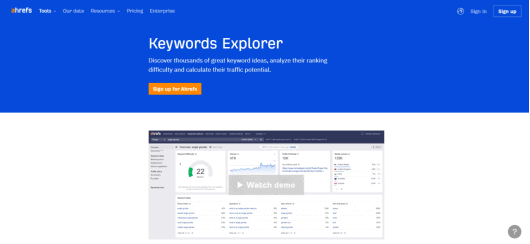
- The Google Keyword Planner: Renowned for delivering punctual and accurate data, accessing this tool’s full potential now necessitates an active ad campaign backed by substantial funding. Crucially, it doesn’t cover other pivotal aspects like ranks, ranking URL, difficulty, and rich snippet results. However, for adequately funded accounts, this tool remains unmatched in estimating search volume.
- Advantages: Unparalleled data accuracy and swift responses.
- Disadvantages: The mandatory significant ad spending and the absence of some key data points related to research are its downsides.
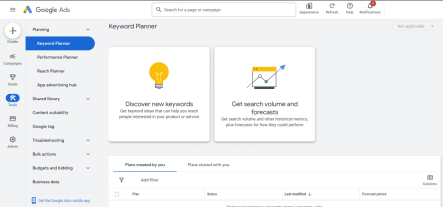
- Agency Analytics, Moz, and WordStream: These tools, encompassing diverse functionalities and target audiences, are adept at data extraction, showcasing precision nearly rivalling Ahrefs. WordStream and Moz, in particular, have been pillars of the industry since the dawn of SEO.
- Advantages: Agency Analytics stands out by offering comprehensive data, although it might not be as prompt as Ahrefs. Moz and WordStream excel in keyword research, but their cost tends to be steeper than Ahrefs, reflecting some limitations in their suite of offerings.
- Disadvantages: These platforms, when juxtaposed with Ahrefs, don’t appear to present as robust or holistic a toolset. It’s essential to highlight that our assessment is impartial; we have no direct affiliations with these tools and appreciate them for their inherent worth.
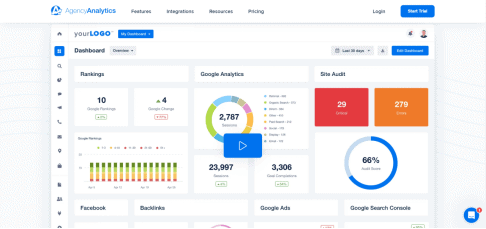
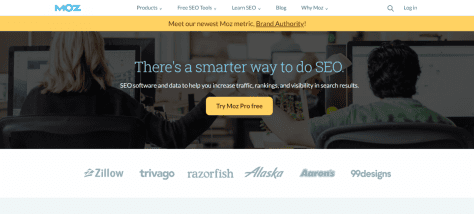
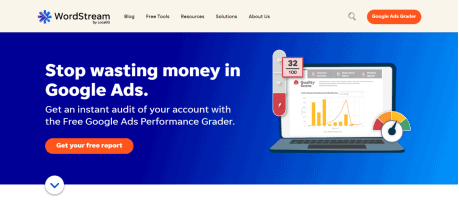
Organising Your Keyword Data
At this juncture, you probably possess a CSV or XLSX file laden with keyword data, extracted from Ahrefs, Google Ads Keyword Planner, the aforementioned tools, or others unlisted. The paramount task now is to systematically sort your keyword propositions within your central Keyword Research Template. Here’s a step-by-step guide:
- Add a fresh tab to your Google Sheets Keyword Research Template for every dataset you’ve downloaded from different tools.
- Use the VLOOKUP function to collate each data point from these multiple tabs into your primary tab, designated for keyword data arrangement.
- Apply the VLOOKUP function meticulously to sidestep potential errors.
- Once you’ve confirmed the correct transfer of all data, opt to ‘copy and paste as values’ to solidify the data, thereby eliminating any cell or tab references.
This procedure results in a comprehensive keyword list. However, your task isn’t complete. As we transition from the keyword research phase, we’ll delve into the subsequent steps.
Target Keyword List and Mapping
Trimming and Concluding Keyword Research
After populating the Keyword Research Template with data, the subsequent step is a meticulous examination of these keywords. This scrutiny informs decisions about which keywords to retain and which to eliminate.
Delete Negative Keywords Immediately
Assuming you’ve meticulously followed the outlined steps, you’ll inevitably encounter certain keywords that are unsuitable for targeting, for a myriad of reasons. These might pertain to search intent, search volume, or the degree of competition. Another consideration is the possibility of an oversaturated category, denoted by an excess of related keywords.
It’s advisable to commence with the most pronounced outliers. For instance, keywords with an exorbitantly high search volume but are patently off-mark should be discarded. Conversely, keywords with an exceptionally high competition level but a negligible search volume should also be excluded. Especially when revisiting these terms, their blatant irrelevance becomes evident.
Take, for instance, a company that specialises in eco-friendly household products. Among their prospective keywords, “sustainable living” stands out. While it boasts a monthly search volume of 30k, a more niche term like “eco-friendly cleaning products” garners around 800 searches monthly.
The prospect of capturing an additional 30k monthly visitors might seem tempting. However, it’s crucial to consider the broader picture. If the firm’s core offering is non-toxic, eco-friendly cleaning solutions, an influx of visitors curious about general sustainable living practices might not translate into meaningful conversions.
In this scenario, the potential value derived from those seeking “eco-friendly cleaning products” surpasses the high traffic associated with “sustainable living.” Given the phase wherein search intent was previously analysed, it’s plausible that many probing the general term “sustainable living” is keener on lifestyle guidance than specific cleaning solutions. This underscores the paramountcy of relevancy and search intent in making judicious selections.
Keyword Usage
For potential content creation, it’s wise to retain terms like “accounts payable.” To facilitate this, introduce a new column in your Keyword Research Template labelled “Usage.” This column will denote where on the website the keyword will be implemented. Typically, we suggest two primary areas of application, though more can be added depending on the specifics of your website and industry:
- Structural Page: These pages are directly accessible from the homepage or main navigation. Such pages usually hold a more significant clout in Google’s ranking algorithm.
- Content Page: This encompasses keywords that bear a tangential relation to your primary offering but don’t warrant a dedicated spotlight on a structural page. Often, content pages comprise blog posts, instructional guides, or case studies.
Most structural pages tend to focus on one, or at most, two keywords per page. For instance, the homepage is usually oriented around a principal target term. In contrast, content pages delve into an array of topics pertinent to your industry, thereby amplifying your credibility on pivotal subjects.
Organising Your Keywords
Effectively categorising your keywords can guide your decision-making process and help identify potential targets. The “Features” category, for instance, proves invaluable due to its multifaceted nature. Our Keyword Research Template offers a subcategory feature within the “Features” category, enabling you to assign multiple keywords to each feature of your SaaS project. Think of the category as the page’s title. For each page, select one or two primary keywords to focus on, ensuring you don’t overload a single page with an excess of keywords.
Mapping Your Keywords
Once the above steps are accomplished, the next move is to map the keywords intended for site deployment, thus finalising the Keyword Research process. This involves:
- Clone the Keyword Research tab and rename it as “Keyword Mapping.” This new tab facilitates the association of keywords with suitable site pages and identifies keywords needing dedicated pages.
- Shift all keywords designated as “Content Pages” in the “Usage” column to a separate tab titled “Content Keywords.” This refined focus aids in prioritising optimisation efforts for the primary site pages.
- Inspect site rankings for the provided keywords. Analyse the ranking pages vis-à-vis their correlated keywords. In instances where a single site ranks for multiple keywords from varied categories, it signifies robust industry authority but also underscores the need for enhanced structuring and optimisation.
- If an existing page already ranks well for a keyword, designate that page as the target page. If a keyword doesn’t align seamlessly with a current page, contemplate creating a dedicated page. Introduce a “Page Exists?” column and annotate with “yes” or “no” based on page relevance.
- Institute columns for “Current Pages” and “New/Updated Pages.” In the “Current Pages” column, specify the extant webpage meant for the associated keyword. If a new page is warranted, incorporate its prospective URL under “New/Updated Pages.” For existing pages that mandate optimisation, denote them under “New/Updated Pages” and affirm their existence in the preceding column.
Menu Structure
For your website’s menu to be effective, it should boast a coherent structure that’s attuned to your primary target keywords. Drafting this configuration beforehand eases its eventual deployment. Scrutinise the “Usage” column for entries tagged as “Structural pages.”
Opt for straightforward, user-centric terms for your primary menu, prioritising user experience and recognisability. For instance, “Categories” is more intuitive than “Product Classifications” since most users search by category. Under the “Categories” tab, furnish links to pertinent pages like Electronics, Clothing, and Accessories.
A rudimentary menu structure might resemble:
- Category: Electronics
- Category: Clothing
- Category: Accessories
As you advance, refine your structural pages and embed the pertinent links. For instance, under the “Categories – Accessories” page, provide links to subcategories like “Jewellery,” “Hats,” and “Belts.” This format offers a clear “pillar content” segment, which is favoured by search engines like Google. Such a menu configuration synergises seamlessly with other pillar content components.
Page Titles, META, and Headings
With the menu and navigational structure now revamped, it’s pivotal to either build any requisite new pages or optimise existing ones for their designated target keywords.
Page titles stand as a cornerstone of on-page SEO ranking factors and demand meticulous attention and crafting. Primarily, the page title, often recognised as the clickable blue text in Google search results, is crucial. It’s prudent to lead your Title Tag with the chosen target keyword for that specific page. Unless your brand boasts significant recognition, it’s generally best to refrain from embedding it in the title tag.
While capturing user attention is paramount, branding can effectively be executed post-click, once the user has engaged with the listing. Prioritising the primary keyword is advisable, as cluttering the title tag with ancillary information may water down the potency of the keyword. This is vital, as unlike META Descriptions, title tags directly influence Google rankings.
META Descriptions, on the other hand, present a golden opportunity to seamlessly link the keyword with your brand while simultaneously serving as a compelling call-to-action, nudging users to engage with your search listing. Presently, the optimal character lengths stand at around 55 for Titles and approximately 120 for META Descriptions.
To enhance the Keyword Mapping tab, consider incorporating additional columns to facilitate the crafting of page headers, META descriptions, and titles. Page headers, being the conspicuous content users encounter upon page load, are indispensable. While embedding the target term is beneficial, it’s vital to ensure its natural assimilation. Ideally, the keyword should nestle within a succinct phrase or tagline that encapsulates the page’s essence.
The inspiration for page headers can arguably be traced back to newspaper headlines. Craft evocative headlines that naturally incorporate the target keyword or its variants. It’s permissible to break up the keyword, provided it retains its semantic integrity. Below are some exemplary headers:
- Elevating Your Home’s Energy Efficiency
- Discovering Artisanal Treasures from Local Farms
- Delving into the Hidden Wonders of Urban Photography
Always prioritise user-focused content, letting Google’s algorithms follow suit. Sites that magnetise and retain user engagement invariably find favour with Google.
Finalising and Keeping Up With Your Keyword Research
Congratulations on completing your keyword research. Bear in mind, that as your enterprise grows, the industry evolves, and search landscapes shift, this list will undeniably undergo modifications. Periods of stasis might ensue, but inevitable revisions will surface in due course.
Kudos for your dedication. Now, let’s transition to the Technical Audit segment of this guide, where we’ll delve into the foundational elements of website SEO.
Conducting Technical Audits for SaaS Enterprises
Having wrapped up the comprehensive keyword research, it’s imperative to pivot and scrutinise the technical backbone of your SaaS platform. Often, SaaS clients we engage with at PageTraffic tend to encounter fewer technical hurdles, courtesy of their commitment to churning out stellar software — an inherent business ethos.
However, it’s crucial to underscore that no digital platform is wholly immune to technical glitches. Based on our hands-on experience, even the most technically robust SaaS platforms occasionally harbour glitches, both minuscule and significant. Addressing these can frequently unlock swift surges in both rankings and web traffic.
Our next move will involve kickstarting a website crawl, dovetailed with meticulous data accumulation. As we forge ahead in our quest to bolster the organic search footprint of your platform, anticipate this to be an ongoing ritual. Brace yourself for this cyclical endeavour.
Crawling Tools
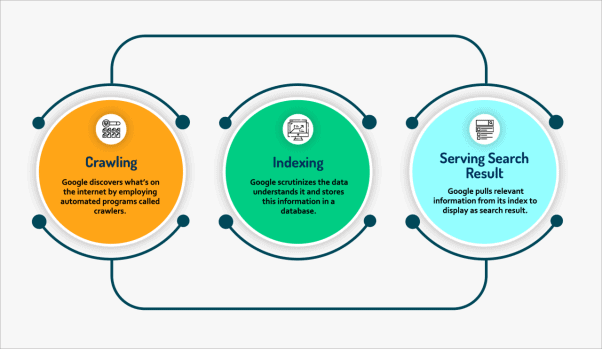
With the exhaustive phase of keyword discovery behind us, the spotlight now shifts to refining the technical underpinnings of your SaaS platform. Typically, thanks to their stringent software development protocols, SaaS clients grapple with fewer tech-related snags. However, it’s a fallacy to assume any platform is entirely glitch-free. Time and again, we’ve discerned that even minutely flawed SaaS platforms can witness notable upticks in rankings and traffic by making strategic tweaks.
The inception point? Embark on a web crawl and gather insightful data. As this is set to be a periodic undertaking accompanying the growth of your site’s organic traffic, it’s essential to embed it into your routine.
When broaching the realm of SEO’s Technical Structure, the toolset is pivotal. While the digital landscape is peppered with an array of crawling utilities tailored for SaaS platforms, only a handful have consistently delivered. Echoing our earlier sentiment on keyword research tools, we’ll spotlight our most trusted crawling tools, delineate their merits, and furnish guidelines pivoted around your site’s dimensions and the granularity of your technical audits.
First and foremost, ensure that Google Search Console is seamlessly integrated and optimised for your site. Both www and non-www versions warrant validation, with the HTTPS facet duly authenticated.
Subsequently, select one (or more) from the following roster to initiate your site’s crawl:
- Screaming Frog: While not our primary weapon of choice, Screaming Frog stands out for its reliability and user-friendliness, making it apt for smaller sites.
- DeepCrawl: DeepCrawl is our go-to for a lion’s share of our SaaS clientele. Its robust suite encompasses a myriad of features, such as accommodating multiple client portals, crawl allocations, and advanced configurations like password-guarded pages and eschewing robots.txt directives. These nuances are a boon for those helming technical audits. While DeepCrawl’s exhaustive offering might seem overkill for some, its prowess in pinpointing glitches remains invaluable, even for novices in the SEO realm. Given our diverse clientele with a broad spectrum of tech challenges, DeepCrawl invariably fits the bill.
- Ahrefs: Of the many crawlers on offer, Ahrefs holds a special place, chiefly because of its multifaceted utility that transcends mere technical assessments. Given our previous endorsement of Ahrefs for keyword exploration (and a forthcoming nod in the Offsite Strategy segment), integrating Ahrefs at this juncture could prove economical in both time and finances.
While DeepCrawl might offer more granularity, Ahrefs’ crawler stands its ground, particularly if your audits aren’t pegged on profound depths or avant-garde functionalities.
Critical Technical Issues
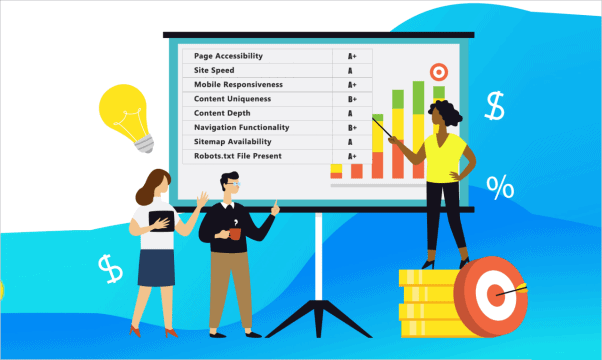
While the tools at your disposal vary, what remains crucial is the ability to differentiate between pressing concerns and less urgent matters. Implementing technical enhancements for SEO requires a keen understanding of the cost-benefit trade-offs.
Nonetheless, certain issues are straightforward to address, and when they pose genuine performance obstacles, their resolution can significantly impact your SEO health. Let’s delve into the primary technical challenges we typically encounter during our audits of SaaS platforms. Our prioritised checklist of concerns is as follows:
- 404s: A 404 error, signifying ‘Page Not Found,’ is arguably the most glaring issue a website can present. Detecting and rectifying a 404 error is essential. At times, these errors might lurk unnoticed, especially if a page seems to load seamlessly. Scrutinise the 404 errors flagged by your crawler to ensure they indeed represent genuine errors. Google dissuades from having 404 errors as they deteriorate user experience. The standard recourse is either to restore the malfunctioning pages or to introduce a 301 redirect to a pertinent substitute.
- Load Time: If a page lingers for over 2 seconds before loading, its chances of securing a good rank on Google diminish. Google’s stance is clear-cut: faster load times are favourable. Although not mandatory, striving for a sub-2-second load time is commendable. While rankings get influenced, so do conversions. Speedy, user-centric websites invariably tout better conversion metrics. Should your site dawdle, tools like Google PageSpeed Insights can pinpoint the bottlenecks and offer rectification measures.
- Responsive: This refers to a website’s adaptability across diverse devices, be it desktops or mobiles. Your platform should seamlessly transition across varying device dimensions, ensuring an uninterrupted user experience. Google’s directive is clear: non-mobile-friendly sites will languish behind their mobile-optimised counterparts in search rankings. It’s advisable to eschew separate mobile and desktop versions in favour of a unified responsive design. Google specialised tools gauge your site’s mobile adaptability.
- Duplicate Content: While Google is becoming adept at managing duplicate content, it remains a thorn in the SEO landscape. Duplicate content arises when distinct URLs on your site echo the same or strikingly similar content. This ambiguity confounds Google’s decision on which page to prioritise for a particular keyword.
At times, Google might inadvertently rank both, culminating in undesired outcomes. To circumvent this, Google recommends using a rel=canonical link tag. This tag redirects users to the authentic version of the page, signalling Google to apportion all credit to this primary source.
Duplicate content can lurk within title tags, the core page content, and even the backend HTML. SEO Tools like DeepCrawl can be instrumental in identifying pervasive content overlaps, especially when it comes to substantial textual replication.
- Weak Content: Pages scant on content are destined for poor rankings or might be outright omitted from indexing. Google categorises ‘thin content’ as material that doesn’t provide value to visitors, often populating pages with little else to offer. It’s prudent to re-evaluate such pages, either amalgamating them for comprehensive coverage or enriching them with substantive content.
- JavaScript-Blocking Navigation: While JavaScript-blocking navigation issues might be elusive when using the recommended crawl techniques, an effective way to identify them is by navigating your website’s various menus with JavaScript disabled through a web developer toolbar. Should certain sections of your site remain inaccessible with JavaScript turned off, it becomes essential to devise remedies, such as rendering those links as HTML or exploring alternative navigation strategies not dependent on JavaScript.
- Missing Sitemap.xml File: Your website should feature an XML sitemap file. Acting as a feed to Google, this file encompasses URLs of the web pages you want Google to explore. Additionally, it offers insights into the significance of these pages and their update frequency. By having this file, Google is facilitated in its thorough site indexing and consistent site crawling, ensuring rapid alignment of Google’s index with any modifications on your website. Without this file, your website becomes solely reliant on Google for access, a far from optimal scenario. Google Search Console offers the provision for sitemap.xml files, which should be utilised.
- Missing Robots.txt File: The significance of a robots.txt file for a website cannot be stressed enough, given it’s the inaugural point of reference for Google to discern which pages shouldn’t be crawled or indexed. This file serves Google’s interests, allowing you to exclude from indexing specific pages, like duplicates, session IDs, or server-generated pages not meant for users.
This targeted approach aids Google in reallocating its crawl resources to sections you intend to have crawled. This file can also point Google to your XML sitemap, simplifying URL discovery for crawling. Given its profound implications, exercising caution with robots.txt is paramount. An inadvertent misplacement of a “/” might trigger Google to delist your entire site. Prior to any modifications, ensure you’re well-acquainted with the nuances of robots.txt.
Site Redesign and Moving Content
When contemplating content relocation or overhauling your website while retaining the core content and platform, it’s pivotal to keep one thing in mind: Google cultivates unique associations with each domain, treating each as a discrete entity. Transitioning from one domain to another, often due to renaming or rebranding endeavours, essentially means starting from scratch. This process, if avoidable, is laborious and not the most efficacious.
Similarly, if the intent is to retain the domain but realign content within, challenges await. The same holds for site redesigns. A change in content’s location within a domain, often executed through a Content Management System (CMS), typically results in URL modification.
For instance, shifting from “…domain.com/about-us” to “…domain.com/about” necessitates redirection to the new URL, leaving the old “/about-us” URL susceptible to a 404 error. Over time, your website’s primary pages might accrue a slew of redirects, potentially muddling the waters and complicating future revamps or platform shifts. There’s ambiguity surrounding Google’s stance on whether such redirects erode link authority, but it’s a consideration.
Ideally, your site should be architected with an optimised URL structure that judiciously leverages your target keywords. While sustaining this structure without URL alterations can be an ordeal, it’s non-negotiable. Adopting this modus operandi simplifies long-term SEO governance.
While it remains pertinent to reshuffle content in line with the menu and navigation layout and for keyword emphasis, it’s paramount to have old URLs redirected to the new counterparts. Embracing long-term strategies is always advisable to sidestep unnecessary content migrations.
Maintaining and Recrawling Appropriate Technical Structure
After implementing the technical best practices recommended throughout this guide and reviewing your SEO tool’s insights, it’s essential to conduct a recrawl of your site. This step allows you to assess the implemented enhancements and identify any new emerging challenges. Moreover, scheduling your selected crawling tool to scan your site based on your desired frequency routinely is crucial.
For websites undergoing significant updates or frequent content changes, a more regular crawling routine is recommended. Conversely, if the website remains relatively static with infrequent content additions, less frequent crawls should suffice.
It’s inevitable that, over time, issues will emerge. It’s not about addressing every single one but prioritising and actively managing the critical ones to prevent performance hitches as you update content and links.
While the mentioned challenges have been addressed, many other optimisation aspects await consideration. It’s easy to become entangled in technical minutiae, but it’s imperative to progress to impactful SEO tasks, such as content creation and link building.
Now, let’s focus on the prospects a technically sound website offers.
Content Strategies for SaaS Enterprises
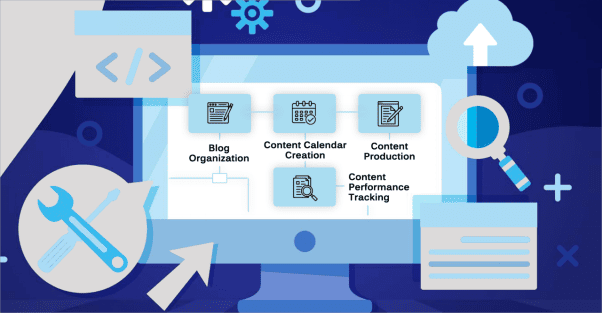
A well-defined content strategy lays the foundation for effective communication between you and your target audience.
Search engines like Google remain the primary avenues through which users discover content, positioning them as essential intermediaries between users and your SaaS offerings. A concise content strategy ensures seamless communication with your prospective audience.
Content can take various forms. It could be direct and geared towards sales, detailing your SaaS solution’s features and pricing. Or, it could be more nuanced, centred around educating and nurturing potential customers, fostering enduring brand allegiance. Both content types are indispensable for effectively marketing a product or service. This section delves into the role content plays in bolstering your SEO strategy.
Beyond simply elucidating an SEO approach, I aim to provide a pragmatic blueprint for a successful content strategy. At PageTraffic, we employ a tripartite strategy to ensure our SaaS clients enjoy comprehensive content coverage, leading them to rewarding SEO outcomes. Here’s our starting point:
- Content Organisation: The organisation and layout of content on your website profoundly influence user experience. Ideally, users seek logically sequenced content, akin to chapters in a manual or product aisles in a store. Scattered content can lead to disorienting experiences, similar to a jumbled book or disordered store.
Significantly, from 2017 onwards, Google’s ranking algorithm has become increasingly influenced by user engagement metrics. This accentuates the importance of content organisation, both for user satisfaction and for optimising search rankings.
- Content Production Strategy: This involves consistently generating fresh content after its categorisation. Challenges such as content type, topic, length, depth, and target audience often arise, complicating this process.
However, it’s essential to realise the vast scope available. Your SaaS solution likely caters to several personas. Moreover, it might serve a spectrum of purposes, all warranting representation on your website. Your content creation strategy should represent a unique blend of your extant content formulation methods. Consistently deploying these techniques over time can elevate your site’s ranking and inherently offer value to users.
- Content Production Plan: This plan identifies potential content pieces and prioritises their order of creation. It complements the Content Creation Strategy, translating these tactics into actionable steps.
Having introduced the foundational aspects, let’s delve deeper into each segment of our content strategy.
Content Organisation
When collaborating with SaaS firms, one of our initial tasks is to scrutinise the website’s content organisation, considering the predetermined target keywords and keyword mapping. Proper keyword research and mapping lay the groundwork for systematic content creation. To start, we revert to the foundational keywords and employ each category to shape content segments for the website’s main navigation.
For websites of SaaS companies, we employ an array of content methodologies, which encompass:
- Features: Here, we delve into the functionalities of your product and its offerings, often in correlation with specific keywords.
- Use Cases: We assess real-world applications of your platform or SaaS solution, enumerating common scenarios of usage.
- Industries: We outline the sectors that leverage your SaaS solutions, aiming to detail a minimum of three pertinent industries.
- Target Audience: We pinpoint the groups or individuals likely to utilise your offerings, detailing their roles or designations.
- Benefits: This segment enumerates the advantages users garner from leveraging your technology.
Each category can be nested under distinct dropdown menus in your website’s primary navigation. We cater to both granular long-tail keyword opportunities and more overarching keyword prospects for each page.
Furthermore, we ensure every target term possesses a dedicated page on your website. Whenever feasible, we advocate crafting distinct pages for each keyword. The overarching category page in your primary navigation can subsequently be employed to cluster these pages. This tactic fosters connectivity between various pages centred on a specific theme and its associated keywords.
Content Production Strategy
To triumph in an SEO campaign, there’s an imperative to produce fresh, value-driven content consistently. The crux of the content production strategy is to offer insightful content that addresses challenges with your product, resolves your target audience’s queries, and enlightens them about your solution’s benefits.
Post the classification of your target keywords and content organisation, you might discern a content deficit imperative for enhancing your site’s foundational strength. This content void should be addressed promptly. The focus subsequently transitions to sustained content creation, progressively augmenting your website’s rankings for an array of long-tail keywords.
Many websites’ blog sections are often relegated to the sidelines. Several blogs exist in siloed realms, detached from the primary website content. This detachment might inhibit leveraging blogs for content generation and bolstering search engine rankings. This scenario presents an opportunity to enact a SaaS content strategy seamlessly integrating the blog within the main website’s fabric, fostering robust interplay between them.
Disseminating your blog content across the entire website can be straightforward. It hinges on crafting interlinked components. For instance, if a blog post about automating invoicing is penned, and your site has a dedicated page for that topic, seamlessly embed a link within the blog directing to that page. Conversely, the invoicing automation page can have a link to the blog, directing visitors to deeper insights post their perusal of the primary content. Through such practices, your blog amplifies your website’s efficacy.
Beyond blogs, your content blueprint should encapsulate other mediums like webinars, videos, and gated content requiring registration. Producing stellar content in these domains is pivotal, as it metamorphoses the uninformed into potential clientele. Blogs wield influence, heightening the allure of your offerings.
To enhance content accessibility, consider reformatting these diverse content forms into blog posts. Having such posts, in addition to standalone docs or webinars, augments value. Furthermore, integrating call-to-action prompts or links within blog entries, nudging readers towards specific actions like downloading primary content, fosters deeper engagement. The ripple effect? Enhanced user engagement, superior search ranking, elevated conversion rates, and a pipeline of potential customers.
Content Production Plan
With your content production strategy delineated, your content organisation framework set, and the site’s structure tailored accordingly, it’s essential to embark on the content creation planning phase. It’s advisable to prioritise content targeting long-tail keywords that present clear-cut ranking opportunities. By harnessing this strategy, you can swiftly enhance your rankings, leading to incremental traffic growth. These incremental gains pave the way for significant advancements in rankings for more expansive, high-search volume terms.
Consistently leveraging a broad term, say “invoice automation”, across a spectrum of articles that delve into various facets of the topic signals to Google the depth of relevance your content offers regarding the subject. Over time, this comprehensive coverage elevates your site’s ranking stature.
Having tackled these immediate-win keywords, you can transition to broader search terms and themes. It’s imperative that all content on your site falls under a unified thematic umbrella, facilitating comprehensive discussions around pivotal issues related to your offering.
Another avenue for content creation prioritisation is analysing active paid search campaigns. These initiatives can shed light on which keywords yield the highest conversion rates. This intelligence can steer content creation towards high-conversion keywords that garner significant attention. Addressing these frequently asked queries not only educates visitors but also boosts site rankings, attracting more qualified prospects.
Amidst content planning, the significance of videos cannot be overlooked. If your enterprise is already producing videos, it’s judicious to transcribe this video content into text-based mediums like blogs. The same principle applies to podcasts.
Transcriptions harness the natural inclusion of pertinent terms and keywords in spoken content. Moreover, this rich content can be repurposed into other formats, including infographics or extended blog entries.
Lastly, monitoring your site analytics can provide insights into user reception to your content. For high-impact pillar content spanning multiple pages, consider repurposing it across other digital channels like email campaigns. This strategy not only drives traffic back to your website but also fosters lead nurturing and maintains user engagement.
Building Links and Cultivating Public Relations for SaaS Enterprises
For many marketers engrossed in SEO endeavours, link building often emerges as the focal point.
Link building, an off-page ranking determinant for SEO, might be less comprehensible than on-page factors, but its importance is undiminished. Even on acclaimed inbound marketing platforms like HubSpot, where content engagement is palpable, the intrinsic value of backlinking remains somewhat enigmatic yet undeniably crucial.
This section delves into the nuanced aspects of proficient link building. It underscores the distinction between linking to content-centric versus commercial pages and accentuates the importance of judicious page selection for link building. Subsequently, this guide will explore two primary link-building modalities: tactical link-building and digital PR. Key strategies for their practical application and insights for effective execution will be spotlighted.
Selecting the Pages to Prioritise for Link Building
A linchpin in a fruitful link-building endeavour is determining which target pages on your site should receive link-building attention. Primarily, there are two approaches:
Utilising Your Current Pages
If your website is nascent or has only recently shifted its focus to SEO, your blog may lack an extensive repertoire of keyword-targeted content. Yet, initiating link building needn’t wait for expansive content. Start with what you have.
Typically, a handful of your site’s pages draw more traffic than others. By dissecting your traffic data — tools like Ahrefs, equipped with backlink analytics, can be invaluable — you can discern which pages are traffic magnets. Post this analysis, you can pinpoint pages that would substantially benefit from augmented traffic, channelling your link-building efforts accordingly.
In some instances, these pages might be primed for backlinking without alterations. In others, they might warrant optimisation for specific target keywords before embarking on link-building.
Developing New Pages
While leveraging existing pages offers a robust foundation, introducing new pages augments your content horizon, fostering growth and broadening your audience reach. Astute keyword selection is the bedrock for churning out fresh, tailored content.
Guided by your navigational structure, brainstorming sessions, and keyword trend analysis, you can cherry-pick optimal keywords for your new pages. With the right target keywords in hand, craft relevant content, embedding these keywords judiciously within key on-page elements. This ensemble includes titles, headings, body content, and meta descriptions.
Distinguishing Between Link Building for Commercial Pages and Content Pages
When identifying target pages for your link-building efforts, it’s essential to discern between building links for commercial and content pages. Linking for commercial pages generally presents more challenges, making it wise to concentrate more on content pages. However, it’s still important to occasionally consider the commercial pages.
Commercial Pages
If your SaaS company doesn’t feature a well-curated, keyword-centric blog, the primary pages will likely be your homepage or feature pages, which overtly market your software offerings. Such feature pages fall into the commercial category.
If these feature pages are already securing good placements in search engine rankings, it indicates Google perceives them as relevant to your product. In such scenarios, directing links to these pages can elevate their organic positions.
However, garnering links for these pages can be labour-intensive. Many platforms might resist linking to them, seeing them as promotional rather than informative. This obstacle can make it challenging to surpass content pages vying for the same keyword. Nonetheless, your odds are enhanced if your predominant competitors are also commercial pages.
Complicating the situation further, review platforms offer comparisons of multiple software tools. This dynamic makes even competing against other commercial pages formidable. Given these challenges, commercial pages should typically play a supplementary role in link-building strategies.
Content Pages
Content marketing predominantly underpins link-building endeavours. On a content page, you can zoom in on a specific keyword and weave links using that keyword and its related variants. When paired with relevant content that enlightens or addresses your audience’s queries, targeting specific keywords adds value and cultivates the potential for superior backlinks.
Content pages encapsulate pillar content, offering exhaustive insights on subjects pertinent to your audience. These pages might also encompass shorter blog entries or videos zeroing in on niche long-tail keywords, elucidating more niche topics.
The richer your content repository, the greater your link-building opportunities. But it’s crucial to remember that the quality of links is as pivotal as their quantity. Since pillar articles generally attract more traffic compared to other content forms on your site, they should be prioritised in your link-building initiatives.
Selecting Your Approaches for Building Links
There are two primary strategies in the realm of link building: Digital PR and tactical link development.
- Digital PR emphasises crafting content that captivates attention, aiming to generate buzz around your site, thus stimulating linking.
- Tactical link building, on the other hand, entails securing backlinks from external sites directed towards your site.
Within these overarching strategies lie various techniques, which will be delved into subsequently. It’s important to differentiate Digital PR and tactical link building from branding PR campaigns, which only sporadically centre on link building.
The chief objective of branding PR endeavours is to amplify social media engagement, like shares, likes, and followers. While these branding campaigns are invaluable, they seldom result in backlinks. In this context, the roles of tactical link development and Digital PR emerge as paramount.
Digital PR Methods
Digital PR strategies focus on external-facing tactics that engage with your target audience’s personas, aiming to boost both search and social traffic to your website. These tactics encompass:
- Thought leadership
- Podcast appearances
- Help a Reporter Out (HARO)
- Press releases
- Paid social media campaigns
Unlike strategic link-building methods, which involve persuading other sites to host backlinks to your site, these strategies predominantly target generating visibility. This, in turn, encourages others to discuss and reference your website. While digital PR gives you less direct control over the results compared to tactical link development, the generated backlink value can be significant. Let’s delve deeper into these strategies.
- Thought Leadership
Thought leadership entails positioning an individual or company as a key influencer, producing and sharing content that underscores authority within a specific industry. This process amplifies subject-matter expertise, fortifying brand credibility, and generating backlinks.
HubSpot adopts this approach through its “thought leadership committee,” hiring experienced or budding journalists who transition into adept content marketers for the brand. Collaborating with senior executives, they gather a consistent flow of insights for content creation.
This approach resembles hiring a technical writer for in-house content, but with an emphasis on external online publication. Platforms like Contently facilitate the hiring of such journalists.
Engaging with a Forbes Council and routinely contributing insights related to your SaaS niche is another indirect method. While this can elevate referral traffic, it’s pivotal to note that sites like Forbes offer nofollow links, limiting their direct SEO value. Hence, they should be leveraged more for brand-building than purely backlink generation.
- Podcast Appearances
Featuring podcasts offers an excellent avenue for obtaining a contextual backlink from platforms with a dedicated audience. However, this backlink typically points to your homepage, not specifically boosting links to other internal pages.
Unlike corporate thought leadership platforms, podcasts are often helmed by individuals, affording them greater editorial autonomy. Their primary focus remains on content valuable to their audience rather than blatant promotional content. When considering podcast appearances, it’s prudent to seek the host’s consent for any promotional mentions.
- Help A Reporter Out (HARO)
HARO provides an avenue to be acknowledged as an authority in specific areas, potentially leading to backlink creation. Journalists frequently post queries seeking expert insights.
By responding to these prompts and being selected for a feature, there’s a tangible opportunity to gain a backlink. Similar to podcast appearances, these links typically direct to your homepage.
Engaging with HARO complements initiatives like thought leadership content production and SaaS podcast guest appearances. Utilising HARO can potentially spotlight your SaaS venture in esteemed publications such as The New York Times, Wall Street Journal, and Reuters, offering both visibility and backlinking opportunities.
However, a caveat when using HARO is that many journalists receive an abundance of responses to their queries. Consequently, it’s realistic to expect that you might need to respond to multiple HARO prompts before being featured in a piece.
- Press releases
Leveraging press releases for backlinks can be a daunting task, especially since journalists don’t frequently cover the SaaS sector. To make the most of press releases, it’s vital to conduct in-depth research about your specific SaaS niche. Engage directly with niche-specific publications and cater your press release to their interests. Craft your press release to highlight a compelling news story that resonates with the target publication’s audience, and adhere meticulously to their submission guidelines.
- Paid Social Media Campaigns
Paid social media is a formidable tool in online content dissemination. Although it doesn’t directly influence SEO rankings, it amplifies the reach of your content to an audience that otherwise might not have come across it. If adeptly targeted, this expanded audience can engage with and champion your content or brand on social platforms.
In turn, bloggers or journalists might discover and reference your content on their platforms. A prime example is leveraging a LinkedIn retargeting campaign to stir interest around specific content pieces.
Strategic Approaches to Building Links
While digital PR strategies focus on leveraging external sources to spark interest and generate buzz, tactical link-building strategies revolve around securing content placements on external websites that offer backlinks to your site. These strategies encompass:
- Editorial link building
- Guest posting
- Reciprocal guest posts or link exchanges
- Authority link building
These methods provide a more hands-on approach to your link-building efforts compared to digital PR. However, they might present their own set of challenges. Let’s delve deeper into how to navigate these strategies effectively.
- Editorial Link Building
Editorial link building involves securing backlinks to your website from the editors of other sites, often as a result of your standing or rapport with them. If they discover your content compelling, they might opt to link to it organically. When aiming to boost the ranking of specific URLs, editorial link building is a potent strategy. If your goal is to elevate your site’s standing for certain keywords and you possess a page optimised for link building, editorial link building is the recommended approach.
Such links establish a connection between the linking site and your website and its content. Generally, these editorial links originate from sites with commendable ranking authority.
To achieve the desired quantity of links to rank a page targeting a specific keyword through editorial link building, adhering to a standard link estimate is prudent. This estimate takes into account various factors, including keyword competitiveness, SERP layout, the authority of websites competing with yours, and your site’s own authority.
If your site’s authority parallels that of competitor sites, or if you offer content assets that are more niche-specific, editorial link building can help realise specific advancements.
- Guest Posting
Guest posting involves seeking approval to contribute content on another platform. In this mutual relationship, the host website benefits from your content while you earn a backlink to your site.
Typically, guest post opportunities are initiated by suggesting a topic that aligns with the host website’s target audience. Most guest posts include a link to your homepage in your author bio rather than contextual links.
- Reciprocal Guest Posts or Link Exchanges
Reciprocal link arrangements can be established through guest post exchanges or direct link exchanges. The methodologies vary: guest post swaps involve sharing fresh content, while link exchanges emphasise embedding links into existing content.
Google generally supports these tactics, given the relevance of both links. However, to sidestep any potential pitfalls, it’s advised to eschew frivolous exchanges. Ensuring that the partner website maintains a standard of quality is also paramount.
- Authority Link Building
Securing tactical links through authority link building can pose challenges. This method is centred on obtaining backlinks from credible sources like news outlets, government websites, and educational institutions. For example, a news site might reference your platform as a trusted source on a given topic.
Such premium backlinks can incrementally elevate your domain’s standing and authority. However, they might not lead to an immediate surge in the ranking of your targeted keywords. Authority sites uphold stringent editorial guidelines, making it less probable for them to prominently showcase your content for promotional purposes.
Moreover, these sites often provide nofollow links. While they are beneficial, their impact on SEO can be gradual. Unless the PR value surpasses this limitation, it’s prudent to approach these links with caution.
Link Building Tactics Tailored for SaaS Platforms
SaaS enterprises can venture beyond conventional PR strategies when it comes to link building. Some tailored tactics include:
- Integration Partnerships: If your SaaS solution seamlessly functions with other tools, consider forming partnerships with those businesses. Explore possibilities to get featured in their integration directories. Such collaborations benefit both entities and enrich the experience for users of both services.
- Strategic Partnerships: If your platform complements other tools but doesn’t necessarily integrate with them, you can draft a blog post detailing how the combined use of these products yields superior outcomes. Reach out to the companies behind those tools and propose co-publishing the article and promoting it jointly on social platforms.
- Exclusive Data: Many SaaS products gather valuable data, which can be curated and leveraged to impart insights to a broader audience. By crafting compelling narratives using this data on your platform, you can serve informative and insightful content.
Achieving SaaS SEO Success Through Proper Link-Building Strategies
Initiating effective link-building commences with meticulously selecting the ideal target pages. As you formulate new keyword-centric pages, jump-start your link-building endeavours with your existing pages. Perform a website assessment to pinpoint your primary landing pages.
It’s noteworthy that building links for commercial pages can be more intricate than for content pages. Hence, prioritising content pages in your link-building quest is a judicious approach.
The dual pillars of link-building encompass digital PR methods, aiming to elevate your website’s visibility, and tactical link-building strategies, facilitating external websites to link to your content. An amalgamation of these methodologies can culminate in a comprehensive and impactful link-building campaign.
For SaaS companies, perpetually evolving link-building strategies and nurturing links is paramount for augmenting their content’s visibility on Google’s premier page.
Measuring SEO Outcomes for SaaS Enterprises
Evaluating outcomes is a cornerstone of any digital marketing campaign, inclusive of SEO for SaaS. Regrettably, the means of gauging SEO outcomes for SaaS entities is often misconstrued. This segment endeavours to demystify this inbound marketing facet and guide you towards sculpting a robust mechanism for appraising your SEO milestones.
We’ve pioneered a systematic approach for assessing performance on Google, termed the “Trifecta of SEO Results.”
The Trifecta encompasses:
- Rankings: Indicates your website’s position in Google’s search results for specific keywords.
- Traffic: Denotes the organic influx to your website.
- Conversions: Illustrates the leads generated from organic visitors.
Delving beyond these core categories may be unnecessary, especially in the initial stages. However, as your enterprise flourishes and you seek granular control over your initiatives, you can augment the spectrum of data you monitor. These trio metrics offer a trustworthy barometer of your SEO health and suffice for most endeavours.
We will delve deeper into each of these metrics, equipping you with tools for tracking and deciphering them. Subsequently, we’ll elucidate why we deem these metrics quintessential for gauging SEO prowess and recommend strategies to calibrate your anticipations throughout your SEO journey.
Rankings
The significance of delineating target keywords was established in our earlier discussion on Keyword Research. This step stands paramount in your journey to SEO triumph. Post the compilation of your keyword roster, it’s pertinent to gauge where your site currently ranks on Google for these specific keywords. To discern this foundational position, resort to an array of rank-monitoring tools.
- AgencyAnalytics is an optimal tool for ranking assessments. Its precision, coupled with an exhaustive suite of features, empowers us to craft detailed reports for our clients.
- Ahrefs is another potent tool we’ve touched upon earlier, and is celebrated for its meticulousness and agility in data extraction. While being indispensable during the Keyword Research phase, it lends itself seamlessly to holistic SEO management, even edging out AgencyAnalytics in certain facets.
- SEMrush emerges as another formidable contender in the SEO toolkit, renowned for its multifaceted research and analysis capabilities. We often leverage SEMrush for a deep dive into the keyword strategies, PPC plans, and other salient intel about our competitors.
Establishing a foundational performance metric for your designated keywords through the ranking metric is essential. This benchmark facilitates easy tracking of monthly progress. While you could be enticed to scrutinise rankings with a granular weekly or even daily lens, it’s imperative to internalise the inherent volatility of SERPs, echoing the capriciousness of stock markets. Periodic tracking, on the other hand, surfaces overarching patterns and trends, offering rich insights into the potency of your strategies and content.
A cyclic monthly report is recommended. As you persistently fortify your SEO strategy, a discernible uptick in rankings becomes evident. Several tools shed light on the top 100 echelons of Google’s rankings, offering a treasure trove of insights. If your site finds a berth even at the 87th rank, it’s a testament to its relevance and not a cause for despair.
This recognition by Google underscores the pertinence of your website vis-à-vis the earmarked keyword. A sustained momentum in content marketing, technical tweaks, and link-building will amplify your stature in Google’s rankings. The North Star here is a discernible upward trajectory from your site’s foundational ranks.
Organic Search Traffic
Organic search traffic, especially the ones at the top of the funnel (TOFU), holds immense promise for conversions. Pitted against other channels, such as paid search, organic social, display ads, and the like, organic traffic invariably clinches the pole position in conversion rates. On the rare occasions when another channel edges out organic, the lead is typically marginal.
To comprehend the high conversion potential of organic traffic, let’s delve into the concept of “searcher intent”. This premise orbits around the motive propelling a user’s online query. Given the formidable impact of organic search traffic, it magnetises individuals actively in pursuit of your offerings, teetering on the brink of a purchase decision.
Upon landing on your website, these visitors typically embark on a quest for deeper insights, seeking validation of your product’s prowess. Once their apprehensions are assuaged, they metamorphose into loyal patrons. To monitor organic search traffic, we advocate the following arsenal of tools:
- Google Analytics: This stalwart in digital marketing analytics stands unparalleled in monitoring website traffic sources and gauging user engagement. While being malleable to global standards and privacy edicts, it’s a veritable goldmine of insights.
- HubSpot: A powerhouse in the realms of CRM and marketing automation, HubSpot also dons the analytics hat with aplomb. However, when juxtaposed with Google Analytics, it’s slightly reticent in data divulgence, possibly a tactical play to fortify subscription loyalty.
- Mixpanel: Favourably reviewed by a plethora of SaaS entities, Mixpanel shines in its ability to weave together user data from an array of interactions, both web and app-based. If your quest is for a nuanced tool, Mixpanel emerges as the frontrunner.
- KissMetrics: KissMetrics basks in its well-earned acclaim. Bridging the gap between Mixpanel and Google Analytics, it’s adept at meticulously monitoring in-app dynamics.
Once you’ve selected and configured your preferred tool, it becomes imperative to consistently monitor the influx of organic search traffic to your website. As you ascend the ranks, ideally securing a spot on Google’s first page, your organic traffic data should manifest a noticeable surge. It’s not uncommon for clients to witness an uptick in traffic, attributed to the emergence of longer-tail keyword ranks, even before they secure top positions for more generic keywords. However, a salient point to bear in mind is that traffic generated from long-tail keywords often commences at a measured pace, gradually gaining momentum.
Conversions
Arguably the most pivotal metric in SEO, conversions can also be the most enigmatic to pinpoint with precision. The suite of tools previously delineated can be harnessed to craft conversion metrics, allowing you to monitor pivotal interactions that underpin the efficacy of your SEO strategy. To navigate this terrain, let’s demystify what constitutes a conversion, the various activities that qualify as conversions, and methodologies to meticulously gauge impactful outcomes stemming from your SEO endeavours
Definition of a Conversion:
At its core, a conversion embodies a specific action or engagement deemed instrumental to the prosperity of your SaaS venture. This encompasses:
- Requesting for a demonstration
- Contacting sales
- Obtaining an ebook or manual
- Installing your app
- Signup for a trial offer
- Opening a new account
- Deciding to buy your product
It’s worth noting that the delineation of a “conversion” is malleable, often tailored to the idiosyncrasies of your enterprise, industry landscape, and unique circumstances.
Conventionally, to shepherd our clientele in their quest to quantify conversions, we lean heavily on the Google Analytics Goals feature. Our modus operandi often entails employing event tracking, enabling us to meticulously monitor discrete activities like button interactions, form submissions, and analogous pivotal touchpoints.
How do you keep track of conversions?
To maximise the impact of your SEO endeavours, it’s essential to tailor your conversion-tracking approach to your business type, industry nuances, and the specifics of your SaaS offering. Among the myriad conversion-tracking tools available, the most effective strategies typically involve guiding visitors through a sequenced interaction with your website and its content, nurturing their engagement, and eventually transforming them into paying customers.
While facilitating a seamless path to conversion is pivotal, it’s equally imperative to recognise that most consumers will undertake a meticulous evaluation of your product’s attributes, capabilities, pricing, and market standing against competitors before committing to a purchase. This deliberative journey often encompasses juxtaposing your solutions against those of your rivals to discern the optimal choice.
We advocate the deployment of a multi-tiered funnel, imbued with a cascade of conversion touchpoints interspersed throughout your digital presence. Envision these stages as constituent fragments of the purchasing trajectory, each illuminating the prospective customer’s intensity of engagement. Based on their manifest interest, it’s vital to channel them through curated funnelling pathways, incrementally ushering them towards the culmination of the purchasing process.
Consider this illustrative funnel:
- Visitors alight on your website via a blog post optimised with your target keyword.
- Drawn by the content, they navigate to another pertinent article to deepen their understanding.
- An emergent email popup entices them to subscribe, marking an initial conversion.
- Subsequently, an email marketing outreach lures them back to your site a fortnight later.
- They opt to download a guide on discerning SaaS solutions akin to yours, tendering additional user data. This signals a heightened conversion threshold and an advanced lead classification.
- Subsequently, they’re assimilated into an email cohort of similarly engaged leads within your marketing automation toolkit. Members of this segment, teetering on the precipice of the final conversion juncture, receive an invitation to a product-centric webinar or demonstration.
- Post-demo attendees are accorded a follow-up from your sales brigade a week later. This interaction imparts supplementary insights, priming the lead for a prospective procurement.
From this illustration, it’s evident that gauging conversions solely based on product acquisitions offers a truncated view. A robust inbound marketing funnel necessitates an intricate understanding of a lead’s decisional journey. This time-tested lead-cultivation paradigm has consistently delivered sterling results over the past decade.
Recognising the multifaceted nature of conversions underscores the notion that immediate sales may not be the direct outcome of your initial SEO manoeuvres. However, a meticulously crafted marketing funnel underscores the role of SEO as the linchpin of your enterprise’s long-term vitality.
Why is it important to monitor all three metrics to understand SEO?
- Initial insights regarding website optimisation are gained through tracking rankings. These rankings make the effect of including and linking to focused material clear. Rankings rise steadily until they pass a certain point at which organic traffic starts to flow.
- Limited traffic is the outcome of achieving ranks on the third or fourth page of Google SERPs. However, moving up to the second or first page starts a slow increase in visitors. Traffic significantly increases due to a significant increase in visitors who click on results in the first half of the first page.
- You notice a surge in website traffic as your ranks grow and draw SERP visits. This flood could be slow or significant depending on where Google ranks your site. This trend relies on ranking parameters, particularly the calibre, relevancy, and quantity of backlinks pointing to your content.
- Your website eventually attracts enough high-quality visitors for its built-in conversion rate to start working. For instance, if your conversion rate is 2%, two out of every 100 site visitors will become customers. Conversions increase as traffic increases and rankings rise.
- Conversion rates start to rise with relevant search rankings, high-quality traffic, and trust built on content. Higher ranks, more visitors, and better conversions all have an obvious combined effect. Due to its cumulative effect, SEO is widely regarded as a successful top-of-the-funnel marketing technique.
This section provides a useful framework for evaluating SEO success over time, assisting you in accurately assessing SEO results.
SEO for SaaS: Achieving Results Over Time
When diving into the realm of SEO, one question consistently floats to the surface: “How long will it take to see results?” This query reverberates as a common refrain across all our SEO projects.
Responding to this isn’t straightforward. Crafting a precise answer demands an intricate understanding of all the concepts we’ve touched upon so far. So, let’s break down the factors integral to shaping a realistic timeline.
Do You Currently Know Your Target Keywords?
Do you have clarity on your target keywords? If the answer is no, it becomes essential to pinpoint these with precision. Dedicate the required time – be it a day or a week – to sift through potential keywords meticulously. It’s worth noting that we encourage our clients to validate their keyword choices through paid search campaigns. Depending on the industry’s dynamics, this validation could span anywhere from 3 to 6 months.
For most of our clients, we allocate about a week to diligently curate a list of target keywords. Robust data and an iterative feedback mechanism back this list.
In the absence of data from sponsored searches, you’re potentially looking at a timeline ranging from 3 to 6 months. But with such data in hand, the process condenses to just a week or slightly more.
Does Your Website Have A Solid Technical Base Upon Which To Develop Content?
A robust technical foundation ensures that Google can effortlessly crawl your website, and it also ensures that users won’t face hiccups while navigating through your pages. It’s paramount to acknowledge the ubiquity of mobile searches. To make your SEO strides count, it’s vital that your website offers an unblemished mobile experience.
The duration required to optimise a website technically varies, but for most of our clients, it spans between three months to a year, with an average time frame of around six months.
Do You Have Enough Content To Support Every Keyword You Want To Target?
As previously highlighted in the content strategy segment, every keyword in your SEO strategy should be bolstered by a substantial amount of content on your website. But what exactly does “substantial” mean? Essentially, your content should be comprehensive enough, in terms of word count, to rival the top-performing content currently gracing Google.
A single page of content might not always suffice. In cases where more depth is needed, we craft a content cluster revolving around a central keyword, which comprises multiple core articles. Each of these core pieces hones in on a related but more specific keyword.
While this methodology demands resources and time, it is incredibly effective. Building an entire content cluster can generally span two to three months, contingent on the number of core articles needed.
For a clearer perspective, consider this: if it takes approximately three months to rank for each major keyword on your list, you can estimate the cumulative duration by multiplying this period by the number of pivotal keywords you aim to target.
Do You Have Strong Links Linking to Posts With Content Related to the Keywords You Want to Rank for?
While high-quality, insightful content is paramount, Google’s evaluation extends beyond just content quality. When Google discerns that users engage with your content—clicking on it, reading through, and lingering—that’s a nod of approval. Such genuine user interaction often propels your content higher in the rankings.
Content that ranks well typically has backlinks from other reputable sites. These backlinks elevate the competitive nature of certain keywords. The challenge is to ascertain the number of links your content needs to clinch the top spot for your designated keyword. This assessment should be replicated for every other keyword you’re targeting.
Once your content is live, gauging the required number of links becomes the next step. Subsequently, you embark on link-building endeavours. Assuming your content is primed and ready, amassing a considerable number of links generally spans about a month (this could range from a handful to several dozen links).
Therefore, you should factor in approximately a month for every content piece you aim to publish on your platform.
Typical SEO Results Timeline
Predicting the duration until SEO bears fruit is no straightforward affair. It’s akin to a multifaceted jigsaw with numerous interlocking pieces. Let’s hypothesise a scenario: a company aspires to clinch the top spots on Google for ten pivotal keywords.
Despite having some paid search data to lean on, their technical framework is lacklustre, and they are bereft of both content and backlinks for these keywords. If we hazard a guess, they might be looking at around 40 months plus a week to truly reign supreme on Google for those keywords. But here are some significant caveats:
- First off, there’s a good chance that none of the ten keywords are competitively equal.
- Second, others are attempting to succeed in SEO. Others in the same race might exist.
- Third, keep in mind that not every keyword is created equally. Some could benefit your business more than others.
You might be pondering, “Why would someone endure over three years for such results?“
You’re tapping into a powerful avenue. Let’s dive right in. SEO isn’t just intricate; its outcomes can often be elusive. As you navigate this journey, results will manifest in various magnitudes. Depending on where you stand, your site might flourish, your business could gain momentum, and the timeline of those achievements may fluctuate. Some individuals witness significant success in a brief span.
Conversely, others might need half a year or even an entire year to observe truly transformative results. Dive into their stories for more insights. Intriguingly, the most remarkable progress? That often surfaces after a year of consistent effort. The silver lining? Even those initial, gratifying successes tend to snowball over time, magnifying in impact.
Is it possible to anticipate your SEO outcomes? Absolutely.
Will every prediction be spot-on? Unfortunately, not always.
Is it prudent to set forecasts before embarking on your SEO venture? Perhaps not for pinpoint accuracy, but it does offer a glimpse into the potential organic search holds for your enterprise.
When should you start the SEO process from scratch for your SaaS business?
If everything aligns, perhaps you’ve laid the groundwork by establishing a robust website foundation, churning out quality content, and running paid search campaigns. If you’re all in, tangible financial benefits might be discernible within a year. However, it’s essential to acknowledge that encouraging indicators should manifest beforehand, painting a clear upward trajectory.
Opting to collaborate with a dedicated team for SEO is a long-term investment. You’re amassing assets that not only retain but often appreciate in value, laying the foundation for sustained growth. Remember, SEO is a distinct ballgame compared to traditional advertising. In advertising, the momentum halts when the budget dries up.
In contrast, your investment in SEO continues to compound, and the results? They persist, ever-flowing and continually amplifying. The beauty lies in the enduring and expansive impact.
We trust this provides clarity. Don’t hesitate to reach out with any further queries.
Conclusion
Diving into this article, readers are offered a comprehensive and indispensable roadmap for manoeuvring through the intricate landscape of search engine optimization specific to the Software as a Service (SaaS) industry. Designed to equip businesses and individuals alike, this guide furnishes up-to-date insights, proven methodologies, and expert advice tailored to the nuances of the current year.
By integrating the methods highlighted within this guide, SaaS enterprises can seize a distinct advantage as technological landscapes and search algorithms evolve. Furthermore, this positions them for heightened visibility, interaction, and digital triumph in 2024 and the years that follow.
FAQs
What are the prominent SaaS SEO trends for 2024?
For 2024, emerging trends encompass the amplified focus on user intent optimisation, the ascent of voice search functionalities, the prioritisation of mobile-first indexing, and the adaptive nature of Google’s algorithms that underscore both user experience and content relevancy.
How can a robust SEO for SaaS strategy be cultivated?
At its core, a successful strategy emphasises crafting top-tier, informative, and engaging content. This involves generating in-depth guides, practical tutorials, insightful case studies, and addressing user challenges, all with the aim of establishing credibility and fostering trust.
Is SaaS SEO a standalone initiative or a continuous endeavour?
SEO for SaaS is an enduring endeavour. As search engine algorithms, user preferences, and industry dynamics shift, it’s imperative for strategies to remain adaptable. This guide underscores the imperative nature of continuous optimisation and vigilant monitoring.
Which metrics are instrumental in gauging the efficacy of SEO for SaaS initiatives?
This guide sheds light on pivotal performance indicators (KPIs) such as organic traffic influx, keyword positioning, conversion percentages, and user retention metrics (bounce rates). Monitoring these parameters can provide invaluable insights into the performance trajectory of your SEO for SaaS initiatives.









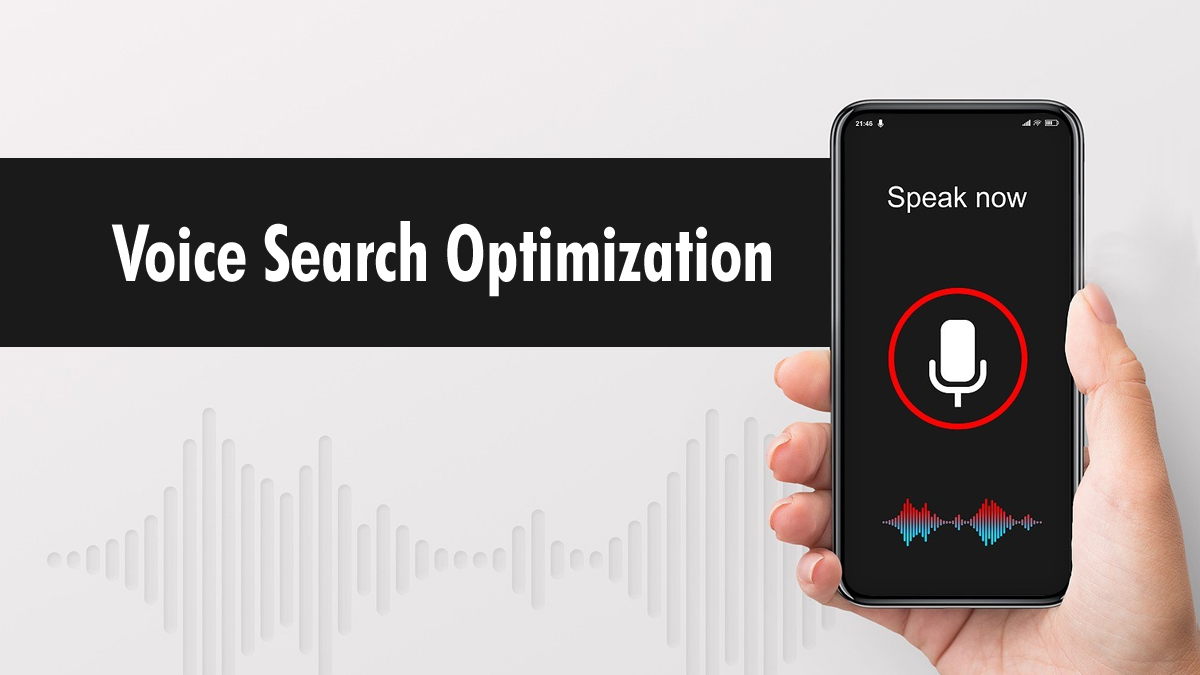



















 RSS Feeds
RSS Feeds